As is always a bit of fun, I’ve gone through and pitted these two cameras against each other to see if I could tell much in the way of a difference in the file quality. DXO says there’s a 4 point difference in the performance between these two sensors (in the GX7’s favor) yet they seemingly employ the same sensor and processor… Seems a little weird, and while I feel DXO does a good job at giving all of us a great resource from which to compare different cameras, it didn’t seem to add up on paper. C’mon in, We’ll have a look at files from each of these micro 4/3 cameras…
Let me start by saying that I’m not refuting DXO’s findings. Quite the opposite really. I am curious to see what a 4 point difference looks like as I have both of these cameras in my possession, and a need for a project for the blog.
Let’s get right into it shall we?
We’ll start with high ISO noise performance.
Below, all shots were recorded at exactly replicated exposure values at the listed ISO values, with the tungsten white balance set in camera, shooting in RAW, converted by default profiles in Aperture 3.5.1 without any noise reduction applied using the Pana-Leica 25mm f/1.4 Summilux lens.
To get some range in the images and try to capture all the way through clipped shadows, I side lit the entire scene by one 60w bulb above camera to the left, and to gain a more focused specular highlight, I aimed a small maglite at the glass on the left (which explains the shadow). Click on any to see them larger, or any of the 100% crops to see it full sized.
ISO 1600:
ISO 3200:
ISO 6400:
ISO 12,800:
ISO 25,600:
Alright, no huge surprises here to my eye. I’m quite impressed by the GM1’s more true tungsten white balance preset. Both do pretty well to keep color consistent throughout the ISO range, even in the stratospheric 5 digit values.
To my eye, the GX7 handles the noise better up to about ISO 6400, but at each ISO setting up through 3200 the GM1, while a little noisier, is sharper. At ISO 6400 they both seem to more or less even out on the noise and sharpness and from there it just starts to get a little messy. Again, props to both for maintaining color fidelity through the entire range.
At ISO 12,800 and 25,600 they’re both noisy as all get out and I’d probably stick to my previous threshold with the GX7 at ISO 6400 unless absolutely necessary, but as you may have seen on my blog in the past with these high ISO comparisons, running one of these high ISO files through Topaz DeNoise 5 works some type of digital sorcery. Sure we don’t magically regain resolution that wasn’t there to begin with, but it can all but eliminate the noise while doing a fine job at retaining whatever detail might have been there. See below, and please click to see larger:
ISO 25,600 after a run through Topaz DeNoise 5:
Compare those to the unedited ISO 25,600 crops directly before. I’m always impressed with what DeNoise can do to make a messy file very usable. Not that this is a Topaz plug necessarily, but click HERE if you’re interested in downloading a full free trial of Topaz DeNoise 5 to give it a run through on your own high ISO files. While the two crops are not tack sharp, the noise is pretty much eliminated while the edges on the letters and numbers are entirely legible, the colors don’t suffer as badly from the noise reduction smear as I see when using other noise reduction software, and remember these are 100% crops.
How about dynamic range?
I know it’s boring to look at more of the above shots, but it was set up to intentionally capture the entire luminosity scale capable on these sensors as recorded by way of the histogram with both the shadows and highlights clipping, or up against their respective ends of the scale. Below are shots from the same setup, but this time at base ISO. We’ll start with the original files which were identically exposed, based on spot metering off of the grey card to establish midtone.
First, the original shots with their histograms:
And after increasing the exposure and compressing the highlight info by identical values, I was able to get these:
I was able to push the shadows up by a stop and bring the highlights back by way of the highlight recovery slider to retain all of the highlight info while gaining quite a bit on the lower end of the register.
Below is the GX7’s adjusted histogram overlaid on top of the GM1’s adjusted histogram. The peaks and valleys are similar, and both shots were captured and adjusted identically, but there are a few different values, primarily in the mid tones. Not a huge difference, and not one that is particularly perceptible, but interesting to see the histograms nonetheless.
It’s difficult to compare one camera to another in a dynamic scene outdoors, and I had a couple setups trying to compare dynamic range, but feel it’s best to keep it to the more boring indoor, controlled static setups.
One thing I have been noticing though is that under (close to) identical shots outdoors, with the same exact exposure and in camera settings, same lens, etc, the GM1 tends to push info to the left, seemingly underexposing by comparison. See below, and again click on any to see much larger versions.
To see it a little better, here is a shot of the two unadjusted shots side by side. Click to see the full sized screen shot.
The GM1 has compacted the entire range to the left comparatively according to the unadjusted file’s histograms, and the green channel on the GX7 is obviously pushed further into the mid tone range comparatively.
Again, I know it’s impossible to get identical shots when there are things like wind, clouds, reflection, atmospheric differences, ghosts and stuff around, but these two shots were taken within 20 seconds of each other or so, from a tripod in open shade on a sunny, cloudless day. This could also be the way that RAW files are converted via the default profiles in Aperture too, so really we’re talking about many moving parts, but for me, I find it interesting that two cameras with the same sensor and same processor, being used with the same exact lens at the same exact exposure settings seem to “see” things a little differently. Firmware differences perhaps, firmware. Interesting is all.
Detail and resolution?
Well, looking at fine detail in two identical shots, I’d say their ability to resolve fine detail is near identical too. Click the 100% crops to see full sized. First, the GM1 followed by the GX7 file captured identically.
As far as any other differences, I’ve not been able to see them. Both sensors, while tending to see color a little differently when set to the same white balance preset under identical settings, and the exposure shift to the left on the part of the GM1, all when shooting RAW files, seem to resolve similarly and perform near identically as far as noise goes to my eye.
So, I guess in conclusion, I have to assume that a 4 point DXO difference is a result of how these cameras seem to be calibrated in concert with their processors when it comes to their performance at differing ISOs. The noise seems a little different as does the overall resolution at these various ISO settings, but at near negligible levels as far as I’m concerned.
I’d say that while they have very slight differences in image quality, these two cameras are on the same level and I wouldn’t choose which camera based on these slight differences, but rather the other features each camera has versus the other. IQ aside, when looking at features they are vastly different machines, both providing a different set of pros and cons.
The GX7 is still my favorite micro 4/3 camera to date. It has all the features I want while providing a comfortable ergonomic grip, faster than average max sync speed in 1/320 (the GM1 has a very strange 1/50sec) and small, but not tiny profile. The GM1 goes the other way in that it has removed things like the IBIS, tilting screen, viewfinder, grip and extra control and function buttons, but offers a tiny package with tricks of its own like a 1/16,000 second max shutter speed (vs a 1/8,000 max for the GX7) and the ability to fit this level of image quality into small pockets.
I think that any differences in IQ would go largely unnoticed without pixel peeping (and have in real world shooting for me). As for the exposure shift, that is very easily correctible in post or by way of exposure compensation in camera and I am very happy with both of these cameras and what they provide me in my compact system.
You can see all the gear used in this review via the links below.
Panasonic Lumix DMC-GX7 Camera body
Panasonic Lumix DMC-GM1 Camera + 12-32mm Kit
Panasonic-Leica DG Summilux 25mm f/1.4 Lens
Olympus M.Zuiko 75mm f/1.8 Lens
Panasonic Lumix G-Vario12-32mm f/3.5-5.6 ASPH Mega OIS Lens
You may have noticed the little add on grip for the GM1 in the images at the beginning of the article. I was contemplating a variety of different add on accessories, and decided to stay as small and light as possible. I chose the very inexpensive FlipBac G2 grip ($10 at B&H here) and have been very happy with it. With a larger lens like the Oly 75 or PL25, it is a tight fit between lens and finger, but then anything that might fit on the camera there will suffer from the same issue. All in all $10 was a steal for something that has made this little camera ergonomically superior to what it was prior.
If interested, here are a couple other comparison and review articles involving the GX7, GM1 and the EM5:
Lumix GX7 vs Olympus EM5, Round 1 – EVF, LCD and IBIS
Lumix GX7 vs Olympus EM5, Round 2 – Ergonomics and Build Quality
Lumix GX7 vs Olympus EM5, Round 3 – Interface, IQ and the final decision
Stay tuned as I’m in the process of reviewing a “legacy” FD 55mm f/1.2 lens after I’ve switched the original FD mount for an EF mount and have adapted it to the micro 4/3 cams as well. Not to spoil anything, but it’s a pretty special lens and on the GX7 with focus peaking and the tilting LCD has been providing me with a cool, waist level finder type shooting experience that has been a lot of fun. It is a very fun time to be a photographer.
Thanks as always for the read, feel free to fire off any questions via the comments or through the Contact Page and I’ll be happy to try and help answer them. Sign up to receive new posts via email at the top right of this page, and if you’ve not yet, find me on Facebook, Twitter and Flickr and let’s keep this party going.
Cheers and happy shooting,
Tyson








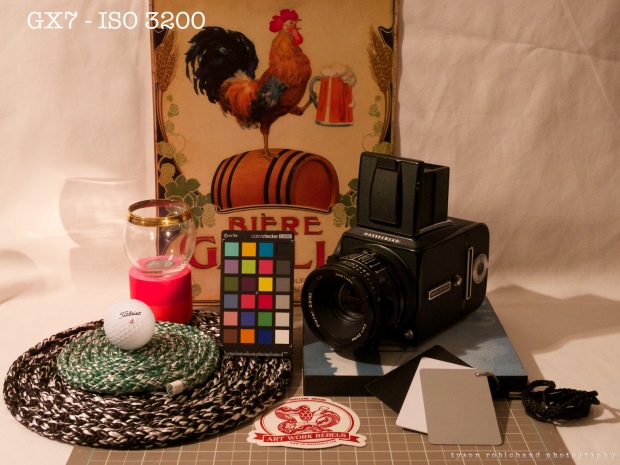






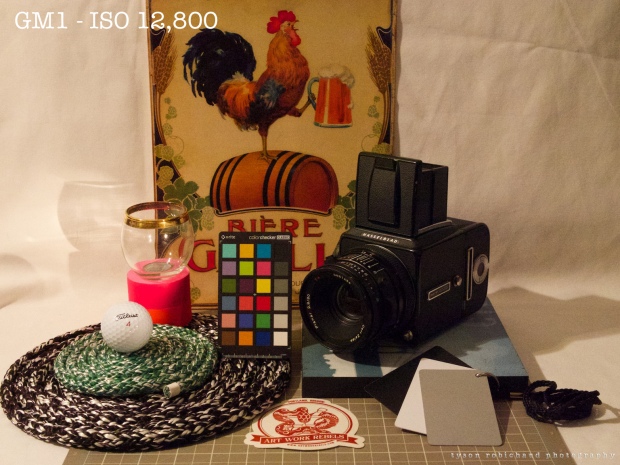









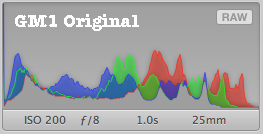



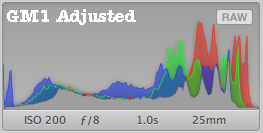









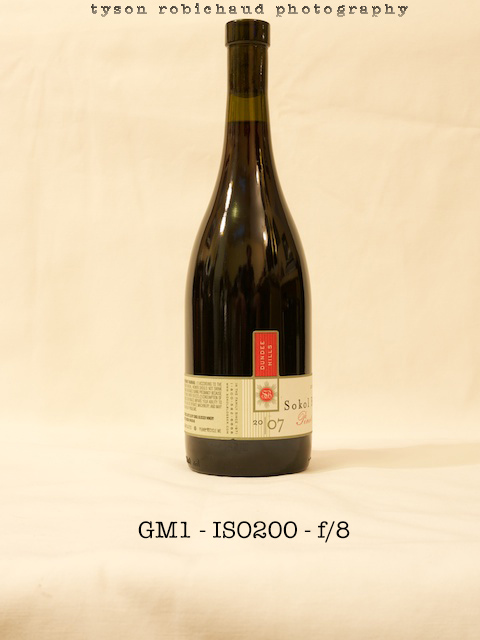



It’s good to see this comparison. I find the GX7 to be interesting, but too close in price to weather-sealed bodies. It’s also not small enough when considering pocket size but it seems a worth opponent to the E-M5 or E-P5.
I’d expect some firmware inspection and adjustment would make things equal. Panasonic has struggled with color and white balance since the DMC-L1.
The GM1 is impressive, no matter how you slice it, and seems good competition for the FujiFilm X100s with the Leica/Panasonic 15mm f/1.7, especially when operational speed matters.
LikeLike
I think it is kind of a hybrid (in Oly terms) of the EM5 and EP5. With the integrated EVF, it is more EM5 with out the weather sealing, or is like an EP5 that would require an add on EVF. Either way, I’ve been very happy with it as my more serious m4/3 body, and I still shove it in pockets. In fact, just yesterday I had in with the Oly 75 (with hood on!) in a light coat front pocket. It’s a little bulky obviously, but easily slipped in and out which considering the lens, was pretty awesome I thought.
I’m finding the color on both of these to be pretty solid, and in RAW is far more consistent than the EM5 ever was for me.
I’m still hounding B&H to try and get an early release PL 15mm f/1.7 because I think it is going to be the perfect mate to the GM line and will also offer a pretty awesome, compact, fast wide angle prime for the system in general, being able to possibly sub out the 14mm, 17mm and 20mm pancakes… And I think you’re right in regards to the comparison to the X100(s) as the GM1 + the 15mm (or 20mm really) can be a compact, quick competitor at about the same price, with the ability to add other system lenses, etc.
LikeLike
How could you? How could you pit brother against brother? GM1 and GX7 are like close brothers!!! Great, well balanced article as usual 🙂 as you know I got the GM1 and still am happily using it with all sorts of lenses, the GM1 is SOOOOOO good and versatile. It’s like a Transformers camera – when I need power, I transform it into a beast by plugging big lenses like the Voigtlander but when I need an everyday “point and shoot” (but with the power of a beast), I transform it into an innocent looking camera with the 12-32mm kit lens… in love with the Panasonic GM1. And when the 15mm f/1.7 Panasonic Leica Summilux lens comes out this year, it’s the bees knees!
LikeLike
I know… Sibling rivalry my friend, sibling rivalry 🙂
I don’t know why, but I’m constantly surprised by how well larger lenses do in fact balance with the GM1. It takes a little getting used to, but really when you get familiar with using your left hand, on the lens, as the primary stabilization point, the minuscule size of the GM1 is very easy to account for while shooting. I still think that they need to add the IBIS in the next generation though. If it had in body stabilization, I think this would be one of the best overall cameras for its price period. As it is, I think it already deserves a huge amount of praise, but as small as it is, I think it would greatly benefit from being stabilized for use with third party optics. Something for them to sell us on with an upgrade though I guess 😉
Thanks Jin, I’m trying to get my hands on the PL15 as well, so hopefully I’ll be able to report back sometime soon on that front.
t
LikeLike
Thanks Tyson, agree with IBIS. It would’ve then opened up at least the Olympus lenses. The Voigtlander 17.5mm (which is a manual lens) certainly would’ve benefited from IBIS 🙂 GM2 will probably be impressive! Look forward to your PL15 report 🙂 budget permitting, I might get one around 2nd half of the year…
LikeLike
Thanks Jin, yeah, I think that the GM2 will bring more features into the fold. Not including things like the IBIS, tilting screen and hot shoe allows them to keep the same sensor, or essentially not needing to build a new sensor for the next iteration while offering one or more of these missing features to a GM2 which will justify the update for many. Just the way it works I guess, but regardless, I’m impressed with the performance straight out of the pocket as is, and any other additions feature wise will certainly improve upon an already great camera. 🙂
LikeLike
I’m pretty impressed with the GM1. Definitely one to get with a pancake lens, when I have some money!
LikeLike
You won’t regret it! 🙂
LikeLike
I do think that they’ve struck gold with this little camera and look forward to seeing what they do with the line. I’d argue that the GF line in its current form is surplus. I see the GM and GX as the “compact” tiers and the G and GH as the “DSLR lite” styles, although depending on what they may be able to do with the GX line, it could also envelop the G line to an extent. Regardless of what they do, I’d like to see the IBIS become standard with every body, Panasonic and Olympus and feel that it offers a great benefit in concert with the other features like the focus peaking which is just awesome with manual focus optics (which also greatly benefit from the IBIS…).
LikeLike
that’s a really interesting read. obviously a chunk of stuff has been omitted from the GM to keep it small and handy. But when you throw a lens on it that has all the bells and whistles (any auto and non manual) then you really have a great little power house. I personally will get the GX7 but if I could have both, one as always carry around, I totally would! I look forward to the FD discussion, being an avid user myself.
cheers
chris
LikeLike
It continues to wow me. I had it and the 20mm pancake in my pocket while out and around town last night. It’s so small and fully capable, but I will say it’s no where near as functional as the GX7.
LikeLike
HI! Might be too late to the party chitchat wise, but I’m researching the GM1 to death right now, and really want a pancake lens as I don’t like zooms at all. Which lens are you talking about here? Thanks Tyson!
LikeLike
Never too late 🙂
The GM1 has been a great little camera for me, but I’d also look at the GM5. While it is a bit of a jump price wise, it does incorporate a couple things that I do really wish the GM1 had, most notably in the click/thumb wheel and a hotshoe. If you can live without those features, which I have been doing just fine without them, it is probably better to save the cash and go with the GM1.
That said, as far as actual pancake lenses that fit properly with the little GM bodies, the only prime lens I’ve used and am aware of is the 14mm f/2.5. The 20mm f/1.7 is a lens I prefer, but it is a bit larger in diameter than the body is tall, so it hangs below the bottom of the GM1’s body, disallowing it to sit flat if set on a table for instance. Not a very big deal, but it gives an idea on how absolutely tiny this little camera is. The only other “pancake” lens that streamlines with the body is the 12-32 kit zoom lens. I know you’ve mentioned not liking zooms, and I am by far a larger fan of prime lenses myself, I wouldn’t entirely discount this little gem. When collapsed, it is the same size as the 14mm pancake (which is the smallest, non body cap lens for the system) so it is as compact as it gets. It has a true, wide 24mm equivalent and it is sharp, really sharp for a kit zoom all the way through the focal range. The only other prime lenses currently that truly fit the GM1 are the Pana-Leica 15mm f/1.7 (which I really enjoy), I believe the Oly 25mm f/1.8 (I’ve not personally used it yet, but I think it has a similar build to the 45mm) and the Oly 45mm f/1.8 lens which, while not a pancake, is a light weight, compact portrait focal length monster. None of these three are pancakes, but they’re all small, light, high quality lenses that in no way feel out of place on the GM1 at all. So many cool choices in this system.
Let me know if you have any other specific questions, I’d be happy to try and answer them.
Cheers,
t
LikeLike
Cool comparison.
I notice in some of the first shots that the microtextures in the black case material of the Hasselblad are more clearly defined in the GM1, but it is a small difference, as you say.
LikeLike
There do seem to be some subtle differences in the files certainly. I have been finding though, that processing files from either camera have very similar characteristics overall in regards to dynamic range, additional sharpening, etc. There is a marked difference between the Sony sensors and the Panasonic sensors as well, and I prefer the Pana sensors, or at least the newer generation of sensors in the Panasonic cameras personally. They’re less digital looking to me for lack of a better way of describing it. Either way, they’re both really good sensors, and cameras in my opinion. Thanks David!
Cheers,
t
LikeLike
Can’t the measured difference by DxOMark be simply attributed to the electronic shutter on the GM1 which activates at faster shutter speeds?
AFAIR it will generate some small additional readout noise.
LikeLike
I guess it’s possible, but I didn’t see that mentioned. The GX7 can also implement the electronic shutter as well, as both cameras have the ability to employ either the electronic or mechanical shutter in silent mode, or E-shutter mode, and the e-shutter can be automatically engaged, or overridden, so I’m not sure if that would have been the deciding factor. Interesting thought though, and perhaps it has something to do with DXO’s findings. For my comparison, I used the self timer and mechanical shutter.
LikeLike
I haven’t tried the GX7 but I own both the GM1 and the GH3 and ever since I bought the GM1, the bigger GH3 gets lets and lets use, the quality of the tiny GM1 is every bit as good as its older brother and the portability brings it to a whole new level. I carry it with me in my handbag wherever I go and I have gotten lots of pictures that I had never captured before. My blog is getting full of images with this small jewel!
LikeLike
I’ve been tempted by the GH cameras, and if I were shooting solely with the micro 4/3 format, I think I’d have a GH3 and be looking at the GH4 pretty seriously.
The GM1 is unique in that it produces an image file capable of matching the quality of cameras not only larger and more feature rich, but of those which also have larger sensors. Perhaps not in all situations, but pound for pound, it is quite possibly the best IQ by weight in the current digital landscape 🙂
LikeLike
Hi, I’m completely confused as to which of these to get. Can someone just confirm the gm1 is perfectly sharp with Oly 45mm 1.8 when hand held and without IS?
LikeLike
IS, whether in body or in lens will only help with hand/camera movement and will do nothing for subject movement. As long as the shutter speed is fast enough to freeze any movement by a dynamic subject, IS won’t really make much of a difference. IS will certainly help when shooting static subjects at slow shutter speeds. Now, as far as the GM1 and any lens without OIS, I’ve found it’s capable of being remarkably sharp, depending on the lens being used. The Oly 45/1.8 is a very sharp lens and has a fast max aperture which allows a better range of exposure latitude so I would say that as long as the exposure allowed for a fast enough shutter speed to freeze any movement, and you were capable of decently bracing yourself and the camera, you could pull off very sharp shots, even in lower light shooting situations. While I feel the GM2 should certainly have IBIS as all m4/3 cams should as a standard at this point, I’ve had far more cameras and lenses without any stabilization and really don’t mind shooting without it as I’m very used to it.
In short, yes the GM1 is fully capable of perfectly sharp images with the Oly 45, and every other system lens 🙂
Cheers,
Tyson
LikeLike
Thanks Tyson-appreciate your response. Nathan
LikeLike
You bet Nathan, any time.
t
LikeLike
Pingback: Lumix GH4 Tests & Reviews - plus GM1 / GX7 / Olympus OM-D E-M10 - Systemkamera Blog
Pingback: *Have you been on the fence? GX7 on super sale. | Tyson Robichaud Photo-blography
Pingback: *$300 off the Lumix GX7?! Camera body, or kit. | Tyson Robichaud Photo-blography
Hey Tyson, great read! As usual, everytime, i do enjoy reading them.
Now that the GM5 is out, would you do a review?
LikeLike
Hi Bob,
Thank you! With the GM5, it’s unlikely I’ll buy one seeing as I’ve got the GM1, but they are nearly identical in specs with the 5 merely adding the hotshoe and EVF essentially. I doubt there will be any noticeable difference between the two performance wise. If I were shopping for a small compact MILK right now, I’d grab the GM5 without hesitation, but for those of us already with a GM1, I don’t see enough to “upgrade” unless one absolutely wants the EVF and hotshoe.
Someday I may get my act together and actually get in contact with these camera companies to try and review models without needing to buy them to do so…
Thanks again,
T
LikeLike
I had to sell my GX7 because it suffered from shutter vibrations. The GM on the other hand doesn’t show any sign of shutter vibrations at all. If you’re interested, go to the URL below and change the camera body to GX7.
http://www.dxomark.com/Lenses/Panasonic/Panasonic-Leica-DG-Summilux-15mm-F17-ASPH-mounted-on-Olympus-PEN-E-P5__883
LikeLike
I think this must be a singular issue, and was a bad shutter as opposed to a widespread issue if anything Dorothea. It happens, certainly, and while remarkably frustrating, may not be intrinsic to a particular model as a whole and certainly hasn’t been my experience at all.
I’d really like to see results from this as I’ve not heard nor seen anyone with this issue since the GX7 was released. The link you’ve provided here and in the GM1 review links to DX0’s articles on the EP5 and PL15mm. If there is an article on any shutter shock with the GX7, I, and I’m sure others, would be very interested in reading it. Feel free to link it here, or email me, and I can link to it.
Thanks again for the comments, and all my best.
Tyson
LikeLike
Pingback: *Good bye 2014, it’s been real. | Tyson Robichaud Photo-blography
Hi Tyson. I really enjoy your blog. I have a camera question – which one should I choose between the GX7, GM5 and GM1? The GX7 and GM1 are at really good price right now.
LikeLike
Hi Lars,
There are a couple ways to look at this. Firstly, all three of these cameras use the same sensor, so IQ capabilities will be near identical between them. The “best” camera of the bunch, for my money would easily be the GX7 because of the extra features. It has the tilting LCD and EVF, IBIS and while it doesn’t employ the 1/16,000 sec max shutter, it has everything else that either of the others have, plus has little things like the 1/250 sec max sync vs the bizarre 1/50 sec of the GM’s. Between the GM’s, the 5 is the “better” camera as it has added the EVF and hot shoe while still maintaining nearly the same dimensions. How much would that be worth paying over what is essentially the same camera in the GM1 though? Totally personal thing, there.
The GM’s will have the obvious size reduction advantage/disadvantage versus the GX7, but I’ve found that the GX7 is just about perfect as a “small, but not tiny” camera while the GM1 is awesome in that it can fit in a pocket, but to me it is very hindered because it is SO small. It really only makes sense for me with the smaller lenses, but in a pinch, the larger lenses work just fine, it’s just imbalanced.
Can’t go wrong, and really it’s about the size and ergonomics then the features. Ask yourself what you really need, what you really want, and I think the decision will probably become much more clear.
Let me know if I can answer any other questions about them.
Cheers,
Tyson
LikeLike
Thanks,
I might buy the gm1 with the kit lens and the gx7 with 20 mm. Thats about the same price as the gm5 with kit lens + 20 mm…
LikeLike
If you can get both the GM1 and GX7 with the 12-32 and 20mm lenses for near the same price as the GM5/12-32 combo, that is absolutely the way I’d go if you’d be willing to pay that for the GM5. The GX7 is a far better camera in operation and ergonomics, while the GM cams are great when wanting to slim it down into pocket territory.
LikeLike